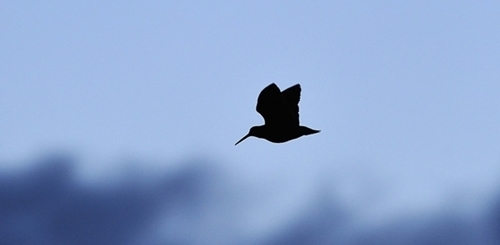
© Laurie Campbell
2 Minute Read
Written by Dr Jennifer Brewin, Writer and Research Specialist
As we take another step firmly towards winter, falling temperatures herald the return of our migrant woodcock - over the next few weeks they will complete their inconceivably long journeys from breeding sites across Scandinavia, Finland, the Baltic states and Russia. The GWCT has satellite-tagged 65 woodcock over the past ten years, in addition to the hundreds studied with earlier forms of monitoring tags, and the results have sometimes been startling. The longest migration we have recorded was a journey of 4000 miles from Cornwall to Krasnoyarsk – these beautiful, secretive woodland birds are truly a marvel of stamina. We are privileged to have them here over the winter – feeding and sheltering in a climate which is comparatively mild compared to what is in store over the winter at their breeding grounds.
Equally as precious as these migrant birds are the other group of woodcock found here in both winter and summer – the resident birds which avoid the perils of such a lengthy migration by remaining here all year round. These residents are definitively in the minority, numbering around 180,000 in the autumn, compared with the 800,000 to 1.3 million migrants which arrive to swell winter numbers in the UK. Woodcock are on the Red List of Birds of Conservation Concern in the UK because both the number and the range of our breeding population – the residents – are falling. It is critically important to protect these resident birds from the effects of shooting too early in the season, when they are the only ones of their species present and premature shooting could have a disproportionately large effect on local breeders. Waiting until you know migrant birds have arrived in your area can dilute the effect of shooting on your residents.
Although migrant birds arrive at different times across the UK, because of seasonal variations from year to year, differences in local climate, the length of journey and the challenges that are faced along the way, a good rule of thumb for most regions is that any woodcock shooting should not begin until 1st December. By this date, the majority of migrants will have arrived in the UK in most years. Numbers do continue to increase through December though, and new waves of continental migrants can arrive at any time through the winter in response to cold weather elsewhere.
Woodcock research is fundamental in providing us with answers as to how these birds are faring, and the GWCT continues to survey and ring woodcock in 2021 for the 11th consecutive year. Lamp surveys allows us to compare yearly changes in abundance at familiar sites, and ringing (or at least the subsequent recapture of ringed birds) provides a way of measuring annual survival in woodcock.
The fieldwork season is just beginning, with post-doc Chris Heward and Director of Research Andrew Hoodless undertaking the tagging to coincide with the new moon in November and December. It can be a challenge! The most successful catch nights are those when the weather is wild, meaning that the scientists venture out to catch woodcock after the birds have settled down for the night when rain and wind are forecast, wrapped in warm clothes and armed with head torches. The worst nights are paradoxically the best ones in the world of woodcock fieldwork. We can only hope that the trends we have seen for woodcock in recent decades don’t carry on to the point where we lose our breeding woodcock, so Chris and Andrew don’t have to trudge around in the rain and the dark to no avail and we can enjoy this remarkable bird for many years to come.